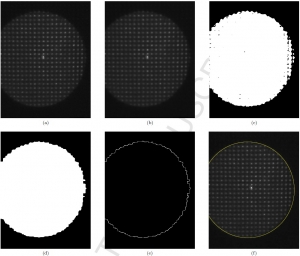
Autors: Juan Mompeán, Juan L. Aragón, Pedro M. Prieto, Pablo Artal
Journal: Future Generation Computer Systems
Pages: 177-190
Year: 2018
ISBN: 0167-739X
Abstract
Hartmann-Shack aberrometry is a widely used technique in the field of visual optics but, high speed and accurate process- ing of Hartmann-Shack images can be a computationally expensive/resource intensive task. While some advancements have been made in achieving high-performance processing units, they haven’t been specifically designed for processing Hartmann-Shack images of the human eye with Graphics Processing Units. In this work, we present the first full-Graphics Processing Unit implementation of a Hartmann-Shack sensor algorithm aimed at accurately measuring ocular aberrations at a high speed from high resolution spot pattern images. The proposed algorithm, called PaPyCS (Parallel Pyramidal Centroid Search), is inherently parallel and performs a very robust centroid search to avoid image noise and other artifacts. This is a field where the use of Graphics Processing Units have not been exploited despite the fact that they can boost Adaptive Optics systems and related closed-loop approaches. Our proposed implementation achieves processing speeds of 380 frames per second for high resolution (1280×1280 pixels) images, in addition to showing a high resilience to system and image artifacts that appear in Hartmann-Shack images from human eyes: more than 98% of the Hartmann-Shack images, with aberrations of up to to 4 microns Root Mean Square for a 5.12mm pupil diameter, were measured with less than 0.05 microns Root Mean Square Error, which is basically negligible for ocular aberrations.
Download PDF: GPU-based Processing of Hartmann-Shack Images for Accurate and High-Speed Ocular Wavefront Sensing
